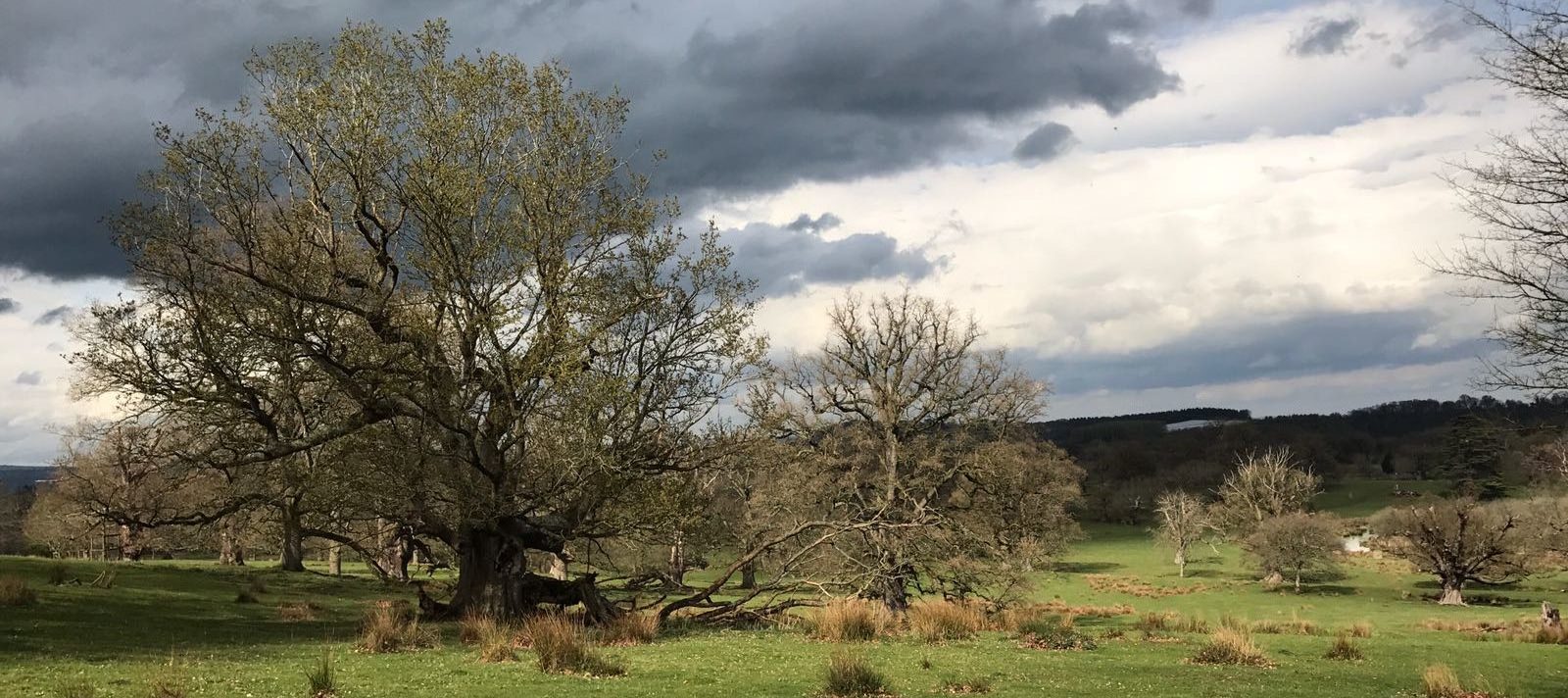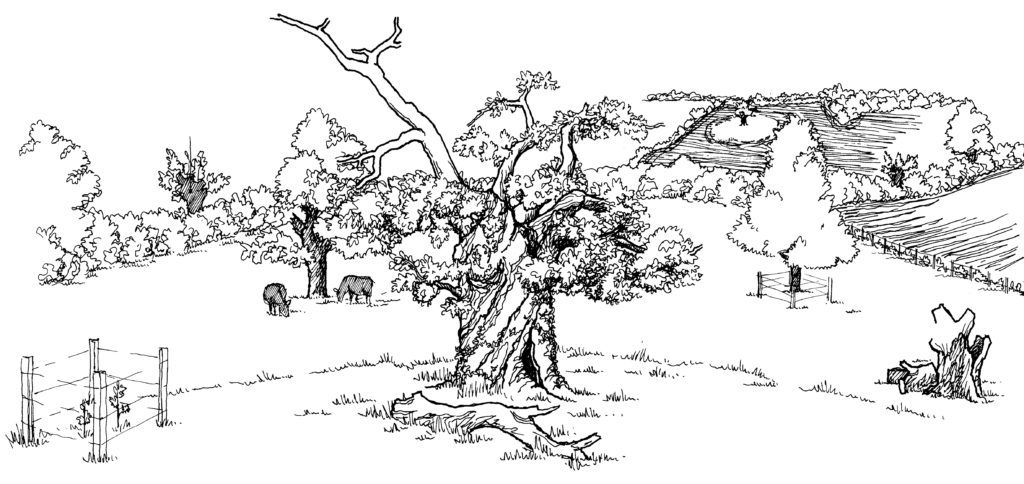What is Wood Pasture and Parkland?

What is wood pasture?
Characterised by big old trees growing in open pasture-land, wood pastures may be derived from Royal forests, old wooded commons and medieval deer parks. The splendid trees they contain are some of the oldest living things in our country. They provide a direct link with bygone landscapes and are home to many rare and threatened species.
Historically wood pasture has been overlooked and understudied as a habitat. Despite its value wildlife, we know little about how much wood pasture is left or what condition it’s in.
Wood pasture is a mosaic habitat which can vary depending on historic and current management. The main, essential attributes of wood pasture are:
- Veteran and/or ancient trees. There should be trees that have grown in an open habitat, which tend to show good lateral branch development or have sunlit areas of the trunk.
- An open ground layer, such as grassland, heath-land and/or woodland floras. Ideally with grazing animals or a history of grazing.
- Grazing animals – ideally present, or a history of grazing
- Wood decay and dead wood in the tree canopies or on the ground, which support a variety of rare species
- Flowers and shrubs which are allowed to flower/Nectar sources which provide food and shelter for insects
The density and species of trees and scrub can vary but the presence of veteran trees, an open ground layer are essential components. Where the site is in good condition there will be multiple generations of trees for future continuity, with at least some veteran trees or shrubs.
Why is it valuable?
Veteran trees are important in their own right, but they also provide food and home for thousands of species. Many of these are among the country’s most rare and threatened species. The high levels of naturally occurring deadwood in these trees provides a vital or valuable habitat for specialist fungi. In turn, these encourage saproxylic (those that depend on deadwood) invertebrates. The tree can then develop wonderful rot holes used by nesting birds, epiphytic plants and roosting bats.
Trees grow and develop veteran features differently in open conditions than they do in a closed canopy woodland. They grow wider, more complex crowns that support more species than is usually possible in woodland trees. They often live longer in open situations which means larger volumes and more consistency of the precious deadwood habitat.
As with many other habitats, wood pasture is facing many threats. Development, overuse, conversion to arable farmland, climate change and fragmentation to name but a few. One of the overarching threats to this habitat is actually lack of awareness. The habitat has been historically understudied and undervalued. This means a lot of people aren’t familiar with it as a habitat at all, not to mention the value to wildlife it quietly sustains. We hope that our survey will raise the profile of this habitat, helping ensure its survival for future generations.
Click here to read more about the wildlife in wood pasture and parkland.

